Main types
The basic classification of these conifers is based on their point of origin. Most of the thuja varieties and subspecies are found in North America and East Asia.
In total, 5 species are distinguished in the genus:
- Korean thuja (koraiensis).
- Japanese (standishii).
- Sichuan (sutchuenensis).
- Western (occidentalis).
- Folded (plicata).
Let's analyze the most common in the CIS countries.
Western
Thuja occidentalis or Western thuja - the most common subspecies. It's easy to get confused in the variety, so let's look at the types that can most often be seen on sale.
Brabant
This variety of western thuja is rightfully considered the oldest - it was used by agronomists back in the days of the USSR for the improvement of urban or private plots. Differs in lush green conical needles.
Brabant is a fast-growing tree that quickly reaches a height of ~ 5 m. annual growth in suitable conditions reaches 40-50 cm in height, 15 in diameter... Suitable "growth" and dense crown make this variety of thuja ideal for creating hedges.
Columna
A tall (up to 10 m) columnar plant, reaching 130-150 cm in diameter. Like the previous one, it belongs to evergreens: with a decrease in temperature, the dark green color of the needles does not change at all.
Grows slowly: young plants add 15-20 cm in height per year, ~ 5 cm in diameter. He tolerates moderate pruning calmly: the main thing is not to overdo it when working with pruning shears.
Thanks to the thinnest root system, intertwined with mycorrhiza, the variety is undemanding to soil: can live in both poor and rich. The only caveat is that he does not like too dense soils.
Sunkist
Unlike previous slender green trees, the Sunkist is cone-shaped with a wide base and light golden yellow needles. Spectacular vertically growing and slightly twisted branches make this variety a favorite of many gardeners: coniferous plant used in alpine slides alone or in combination with relatives in hedges.
Annual growth is extremely small - about 5 cm in height and width. The height of an adult plant can reach 0.5 km, but this will take ~ 25-30 years.
Eastern
Biologists removed Platycladus orientalis as a separate species of the cypress family - now it is more correct to call the eastern thuja the eastern flat-headed plant. However, designers and ordinary people still consider this plant to be thuja and distinguish many species.
Aurea Nana
One of the most requested dwarf varieties. The height of an adult shrub is up to 1 m (usually 0.7-0.8 m). The diameter of the egg-shaped crown in the widest part is about the same - 60-90 cm. Develops slowly, each year increases by about 4-5 centimeters.
Grown in rocky gardens, flower beds, mixborders, individual pots. Compact size and unpretentiousness egg-shaped tree allows you to use it even for balconies, loggias, terraces.
Morgan
Also known as Thuja orientalis Morganii. Another dwarf thuja: by the age of 10 it reaches half a meter, individual specimens grow up to 70 cm... The needles are small with a golden tint. In the sun it becomes bronze, in the cold, on the contrary, it turns green.
Slow-growing Morgani prefers bright, well-lit areas... It can grow in the shade, but the shoots will become rare and less lush.
Yustinka
It is easy to guess by the sound of the name - the variety was bred by Polish breeders. Similar to Aurea, but different from the first greater frost resistance and a darker conical crown. Also grows faster - up to 10 cm per year.
In the sun, the needles are thicker, juicy green. In a shaded place it becomes less frequent, darker.
Folded
Folded thuja is also called oriental red cedar. Some subspecies look like western or eastern, others are fundamentally different from their counterparts and are more like decorative palms.
Kornik
Powerful shrub with a pyramidal crown. An adult plant reaches 3 m by the age of 10. Branches are horizontal, densely growing with a bright green color. From frost or scorching sun, they can turn yellow, go into a bronze tide.
Kornik - frost-resistant, shade-loving plant... Also interesting is him pest resistance - insects practically do not attack this variety.
Zebrina
A bright coniferous tree with a rather wide conical crown - in silhouette it resembles an equilateral triangle. The name is justified by the variegated colors: green needles alternate with yellow-gold. "Plumage" of young shoots is rare, becomes thicker with age. Thuja grows up to 12 m in height, while adding 15-25 centimeters per year.
Under natural conditions, trees choose swampy areas with moist acidic soil for life. For decorative purposes, they are also planted in partial shade, creating alleys.
Goldie Forever
The variety of shades in the crown makes Forever Goldy an excellent choice for beautification. In summer, the needles are light green with lemon young shoots, in winter they are bright yellow, in spring, in autumn they are orange.
Doesn't like severe winter frosts, will take root well in climatic conditions with relatively mild winters: up to -20-23 degrees. Shape - conical, growth - slow... By the age of 10, it is a cone 2 m high, 1 wide.
Varieties in the shape of the crown
As you might have guessed from the description of the previous species, thujas differ not only in the place of growth or selection. They also come in various shapes: tall and narrow, wide and flat, balls and cones.
Dwarf
Small bushes, like large trees, also come in different formats: but they are distinguished by their compact dimensions.
Danica
By the name of the thuja variety, it is easy to guess about the country of origin. Danica was indeed bred in Denmark in the 50s of the last century. Has a rounded spherical crown ~ 50-60 cm in diameter.
The red-brown stem is covered with soft scaly needles of an emerald green tone. Virtually no need for care, survives both drought and humidity. But it is better that the soil is loose enough.
Teeny Tim
Another western spherical thuja. Used for compositions in flower beds and rock gardens. Almost twice the size of a Danica - lateral shoots grow up to half a meter... The needles are shiny, from rich light green to dark green.
Small thuja is resistant to cold winters, city smog, dryness, waterlogging.
Little Champion
Unlike previous western thuja varieties, Little Champion prone to natural discoloration: in the summer the bush is green, in the winter - brown or brownish. The variety fell in love with designers for its unique spreading crown: although the branches grow quite rarely, the bush looks still interesting.
Columnar
Emerald
One of the most popular western species on a par with the brabant.Large trees (up to 5-6 m, but the average size is ~ 300 centimeters) of the correct shape with lush emerald needles, which retain their shade even in severe frost.
Smaragd columnar requires sun, but does not like drought - therefore, watering should be regular, preferably automatic. In autumn, the frequency of water supply is reduced; for the winter, the soil is covered with mulch.
Young seedlings should be protected from snow for the first 2-3 years.
Fastigiata
Slender rows of thin thujas of this variety can often be found in city parks, along alleys and paths. Even though the tree looks elongated, in width it reaches 300 centimeters - however, its impressive dimensions are leveled by outstanding growth - up to 8-9 meters!
Thuja grow quickly (up to 30 cm per year), live long (about 200 years), retain their green color even in the harsh conditions of the middle lane. Due to their combination of density and height, they are often used as a buffer, protecting areas from roadside dust.
Europe Gold
A juicy crown with a yellow tint distinguishes this species from other columnar trees. Thuja Europe Gold does not tolerate shade, loses its zest - yellow color.
Height not too big (up to three meters from the ground to the top), therefore, thuja often acts as a tapeworm in rockeries, flower beds, compositions.
Pyramidal
Holmstrup
Conical shrub, up to 3-4 meters high. Thuja branches covered with green scaly needles, grow very densely. Color stays throughout the year.
Thuja Holmstrup is resistant to frost, dryness, waterlogging, not picky about mail. truth growing slowly enough - 10-12 cm in 12 months.
Pyramidalis Compact
The term Compacta characterizes the width, not the height of the tree: from the root to the end of the branches from the bottom up, thuja can reach 10 m... And in width it remains quite slender - 180-200 cm.
Pyramidalis - one of the most frost-resistant subspecies, withstands frosts up to 40-45 degrees. In winter, the dark green crown can turn brown.
Spiralis
Slightly higher and wider than the previous one - the maximum size is 15 * 3 meters. Growing fast, adding 25-30 cm annually. Less cold resistant - up to 35-37C.
Thuja got its name Spiralis thanks to the twisted branches - even without pruning, such a tree looks decorative.
Cushion
One of the rare forms is the cushion crown. Low, creeping, without definite clear boundaries.
Umbraculifera
The bush resembles an umbrella, hence the name Umbraculifera (umbrella). Initially, the seedling grows in a ball, but over time it becomes more and more flat. Maximum size - 150 cm in diameter.
The main advantage of thuja is resistance to pests and diseases... It can be planted without fear in a rock garden, rockery or other compositions as a medium-sized plant.
Golden Tuffet
Golden Tuffet belongs to dwarf conifers: the variety is almost three times smaller than the previous one, reaches a height of 50 cm, a width of no more than 100.
Decorative crown gold, with red, red, pink or lemon tint. Often, compositions are decorated with this thuja to dilute green plantings.
Spherical
Mr bowling ball
No wonder this bush was called a bowling ball! A dwarf thuja in the shape of a ball with incredibly dense, dense needles really resembles a heavy ball.
IN the size of the green ball reaches 90 cm, increasing every year by 3-5 cm... The shape of the crown is natural, the bush practically does not need pruning, shaping.
Mr. Bowling Ball can withstand frosts up to 40 degrees, in winter it can turn red.
Globoza
The thuja variety appeared at the end of the 19th century and still remains a favorite option among many people.
Crown diameter up to 1 meter, needles are light green, in the cold season - with gray, brown veins. Globosa is not afraid of frosts down to -28C, loves the shade.
Teddy
The shaggy dense bush really resembles a teddy bear. Extraordinarily compact - average size 30 centimeters in diameter... Thuja looks great in flower beds, mixborders, stone gardens in the style of China.
There are also oval variations of Teddy - they are considered cushion-shaped.
Types by color
The color of the crown largely determines the appearance of the tree: what do you choose - classic green, original yellowish or noble blue?
Green
Most of the varieties that we examined above have exactly the green shade of the crown: brabant, smaragd, aureanana, justinka and many others.
Interesting options from those that were not indicated:
Woodwardy
The variety of thuja Woodwardii is almost 100 years old and all this time it has been and remains one of the most popular varieties in Europe... The crown is spherical, but elongated: it looks like an egg. Dimensions can reach 3 meters from edge to edge, 2.5 from bottom to top.
Little Giant
The egg-shaped thuja is similar to the previous one, but is inferior in size: the dimensions do not exceed 80-100 centimeters.
Little Giant is ideal for minimalist oriental garden projects.
Golden
Ornamental trees and shrubs with a yellowish tint draw attention to the green thickets, creating natural contrasts.
Reingold
Bright light green needles with young orange twigs fit perfectly into the design of gardens and alleys. The size of the thuja is 2-4 meters up, 2-3 m sideways.
Since the Rheingold variety originally grew in Canada and North America, thuja is not afraid of frost, wind, and moisture.
Golden Smaragd
Subsort of already known to us type of emerald Golden smaragd has a juicy bright yellow crown, but requires planting in a bright, sunny place - otherwise the needles will become faded and lose their decorative effect.
Golden Globe
Golden globe is a yellow dwarf subspecies of Woodwardie described above. The dimensions of the ball reach 1 m, are often used in compositions with stones, planted in flower beds as a tapeworm.
Blue
Like blue spruce or juniper, thuja with a blue tint looks very impressive.
Blue Con
Perhaps, the most famous blue thuja... Not only does the crown itself have a bluish tint, but also the cones with which the tree is richly covered are also blue.
This oriental variety perfectly tolerates heat, grows up to 3 m, has the shape of an egg.
Meldensis
The crown of the thuja changes with age and the change of years: the egg turns into a cone over time, the blue summer shade is replaced by a winter lilac. Meldensis is a dwarf species that does not exceed 30 centimeters in height.
White
The rarest color of thuja is white. This does not mean that the crown is tinged with chamomile petals. The color of the needles is rather green with white or light gray veins.
White Smaragd
The most common variety is White Smaragd - the tree looks like a green or yellow fellow, but has chaotic white spots throughout the thickness of the branches, which persist throughout the year.
A three-meter tree grows in the shape of a cone. Delicate needles do not like bright sun, it is better to plant in partial shade.
Most popular varieties
The beauties Smaragd, Brabant, Columna, Reingold are annually included in the TOP varieties. But no less popular are the species that we have not yet named.
Erikoides
A fluffy compact variant, up to 1 m in size. Ericoides' branches are thin, spreading, so the bush requires regular formation. To maintain their shape, for the winter, the branches are tied to the trunk - otherwise they may simply break under the snow.
Wagneri
An adult thuja resembles an egg. It grows up to 5 meters, while the diameter in the widest part can reach 250 cm. The needles are green, light-loving - in the shade they can lose their density and color.
Vipcord
Folded thuja, loved by many gardeners for its unusual appearance... Shoots resemble thin wires or threads hanging from the center in different directions.
Despite its compact size (up to 30 cm), it easily tolerates frosts, it will remain a decoration of the site even in winter.
Elvanger golden
Capricious appearance of thuja originally from Germany: in order to preserve the beauty of the yellow needles, the tree should be protected from the bright sun, severe frost or wind. The color is deep yellow, yellow-orange, the crown is conical.
Hoseri
A miniature copy of the popular Globoza. Shape - egg or ball, height up to 1 meter. In winter, the crown can change color (it does not always do this), but at the same time it does not lose its decorative effect.
Fast growing varieties
The record holders in terms of growth rate are mainly tall trees: Brabant (up to 30 cm per year), Columna (up to 15 cm), Fastigiata (up to 30 cm).
Golden Brabant
Thuja Golden Brabant (pictured) has yellow needles, but grows no less quickly than its green counterpart - plus 20-30 centimeters per season.
Vareana
Thanks to the addition of 20 cm per year, it quickly reaches its final height - 6-7 meters.
Degrut Spire
Height, like the previous one, up to 7 meters, but the growth is even faster - 25 centimeters per season!
Amber
Bright yellow tree up to 5 meters (average - 3). With proper care, it will add 20 cm in a suitable soil.
Gelderland
Thuja not only grows rapidly (up to 0.2 m), but also has incredible endurance. Calmly survives frost, sun, shade, lack of fertilizers.
There are an incredible amount of thuja varieties: some are similar to each other, others differ in color, shape, size. Everyone can find their own!

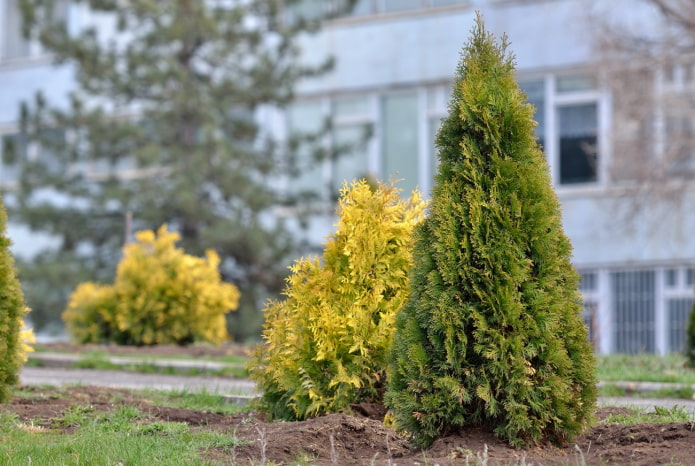
 10 practical tips for arranging a small kitchen in the country
10 practical tips for arranging a small kitchen in the country
 12 simple ideas for a small garden that will make it visually spacious
12 simple ideas for a small garden that will make it visually spacious
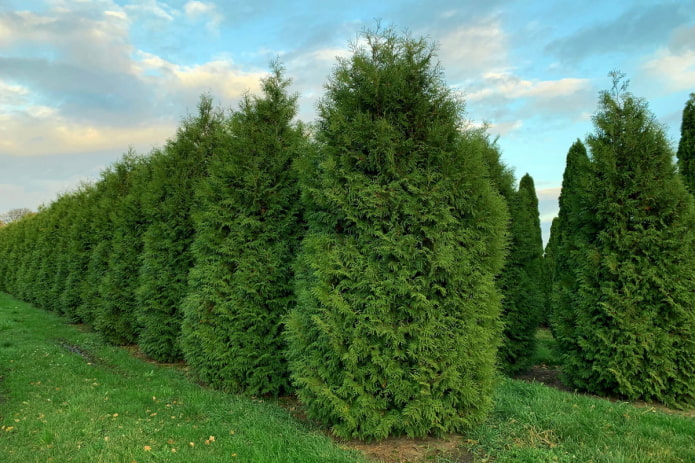
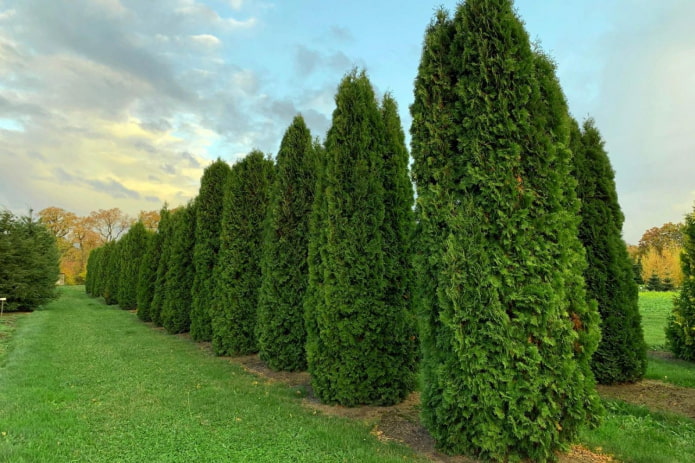

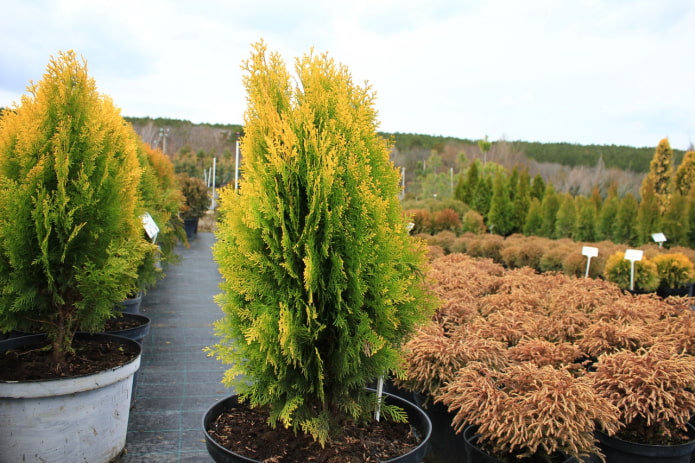
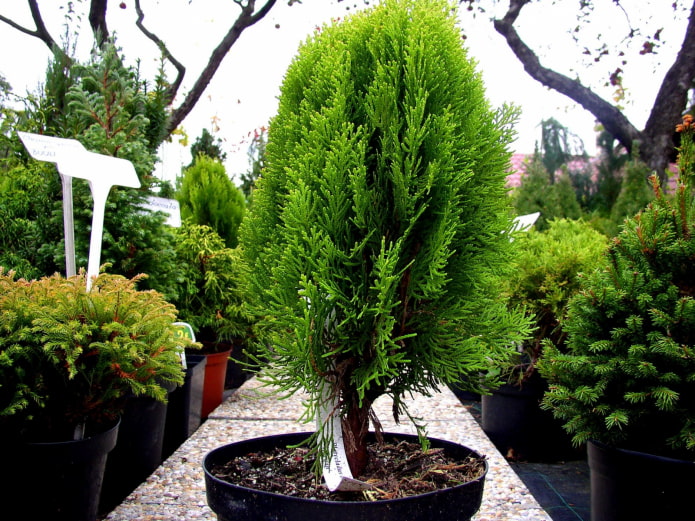
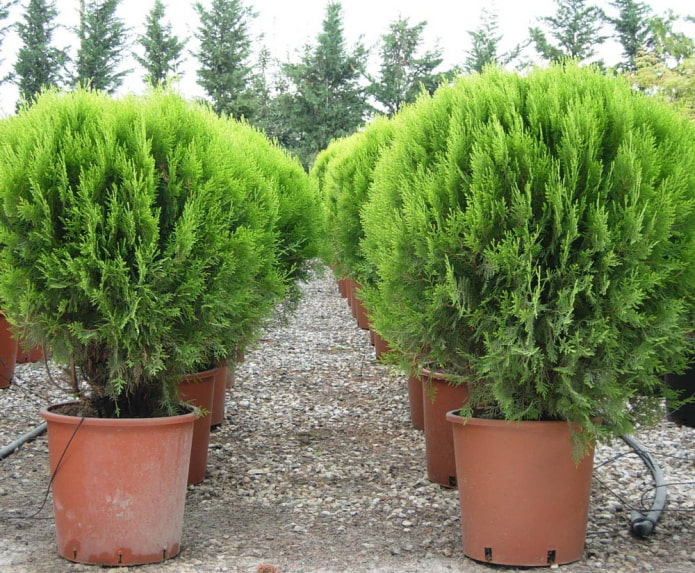
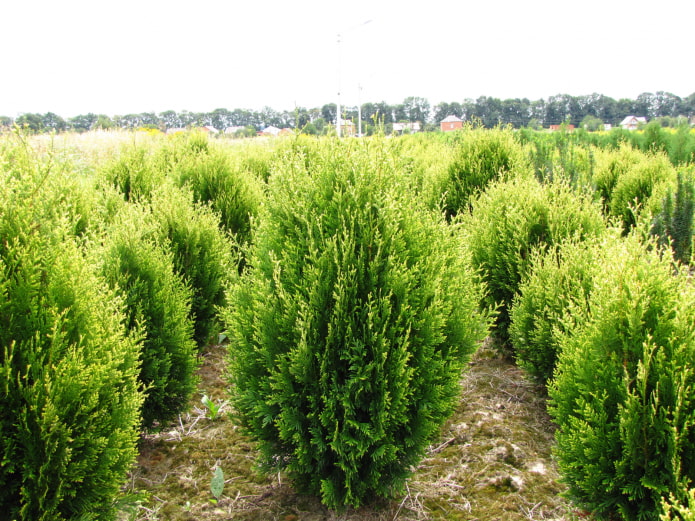
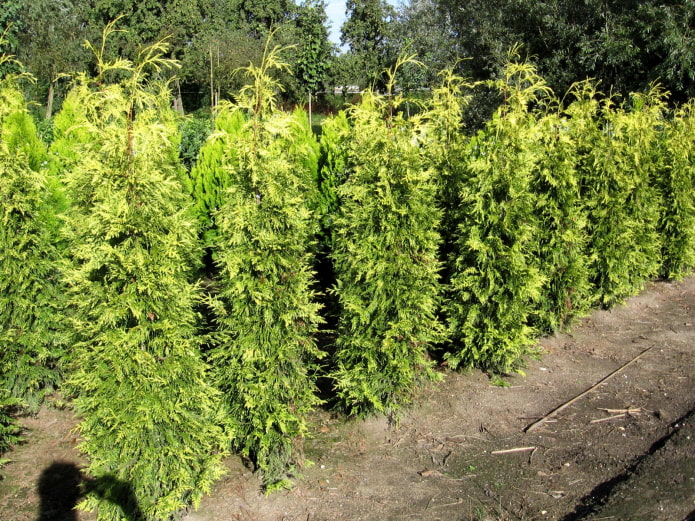
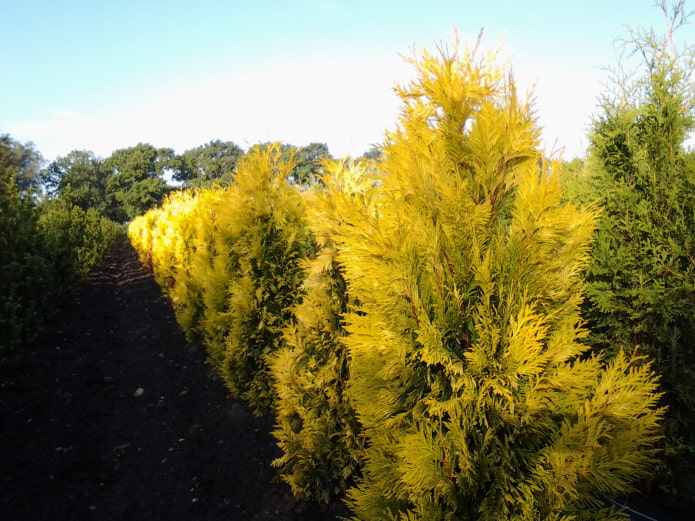
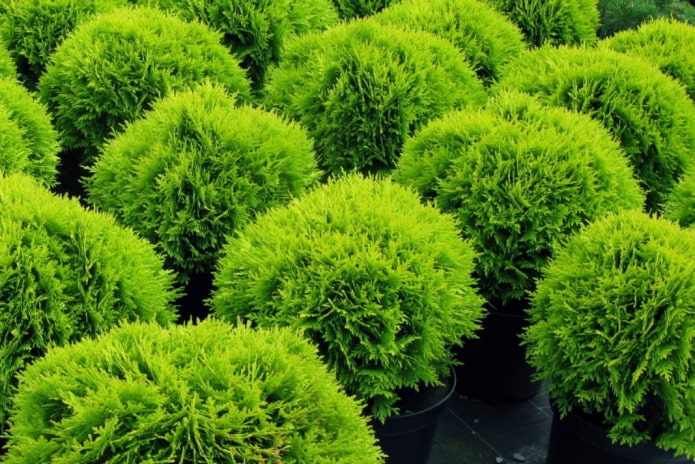
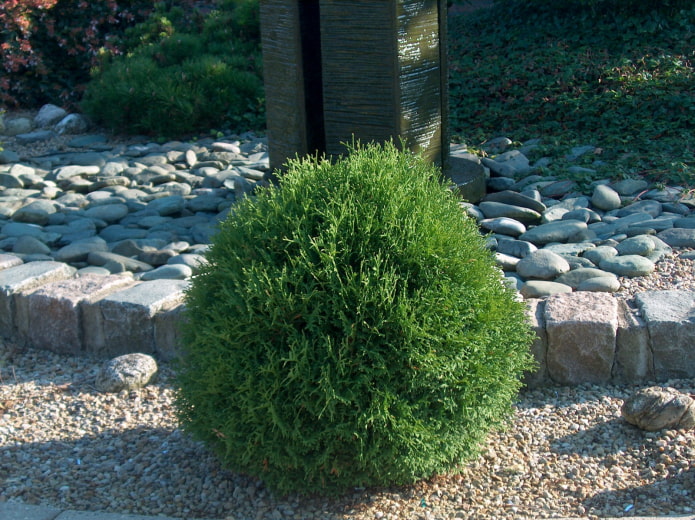
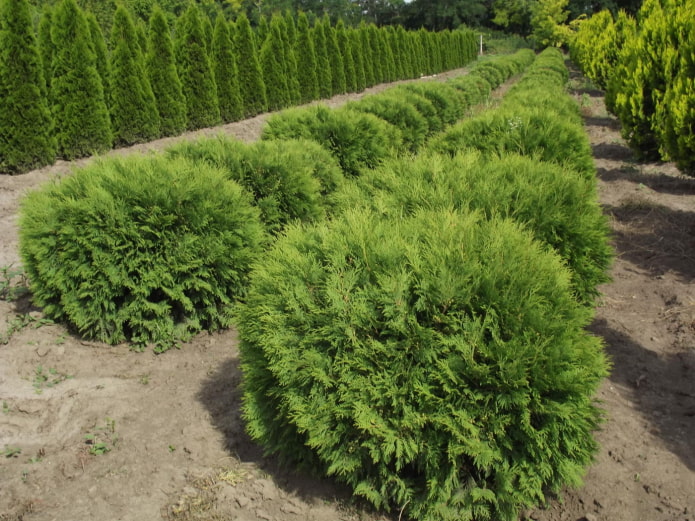
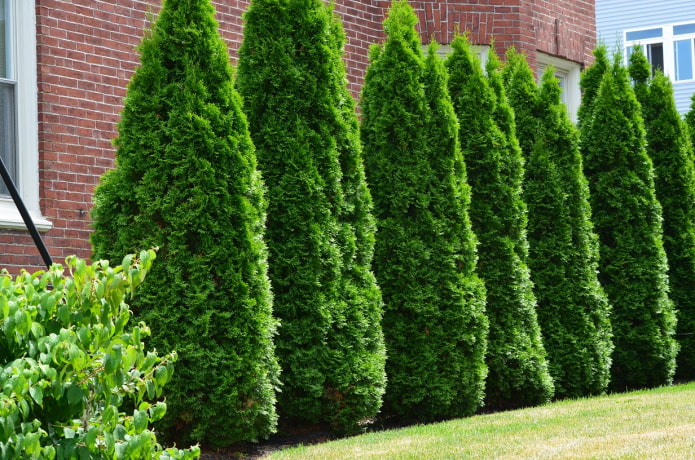
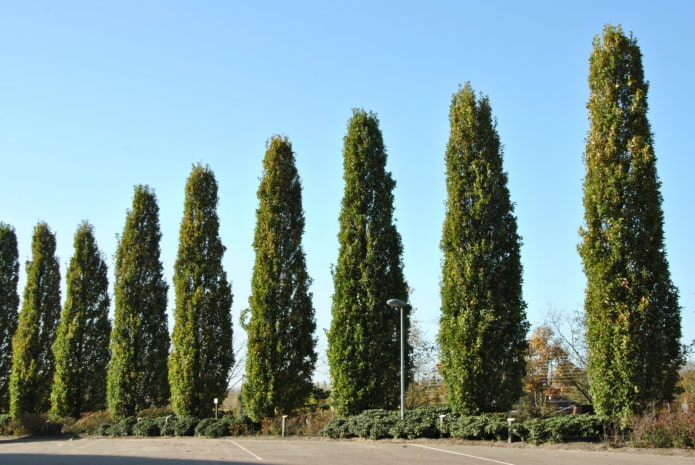
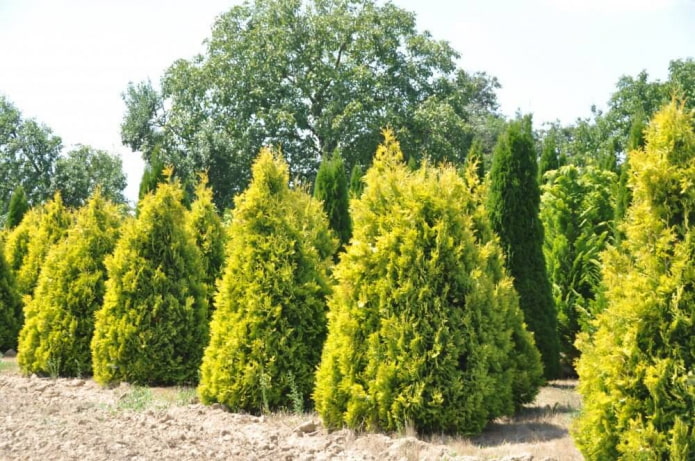

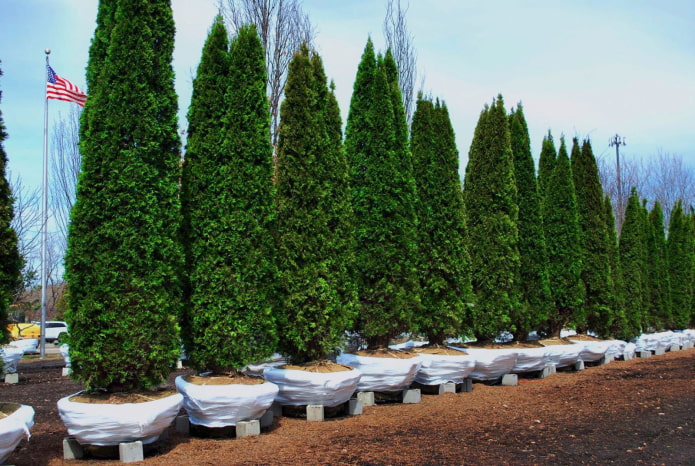
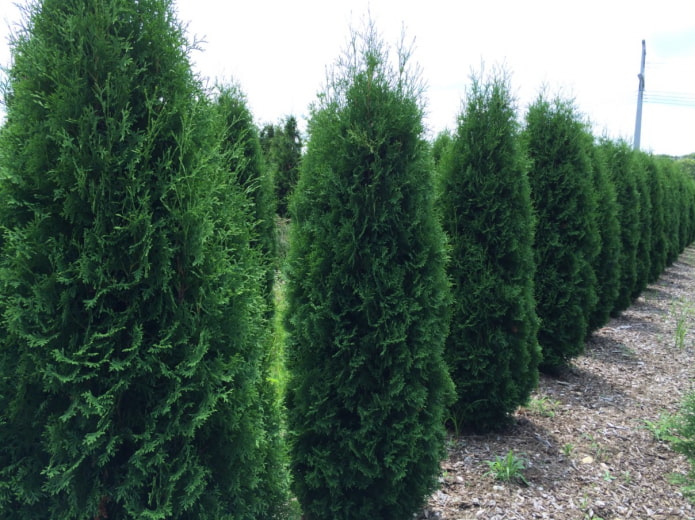
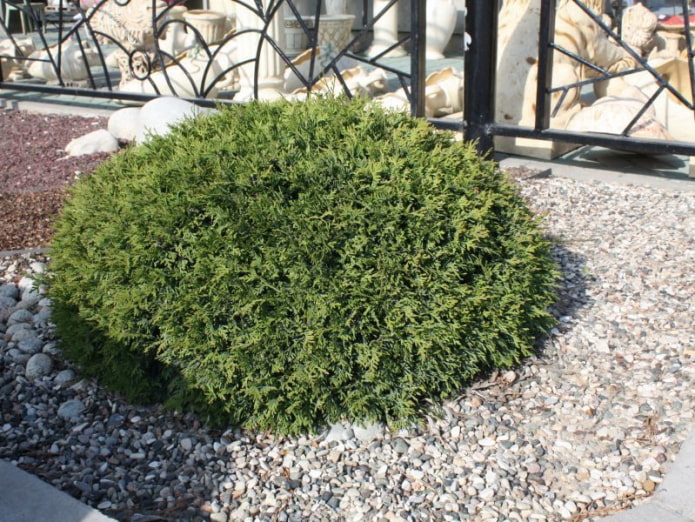
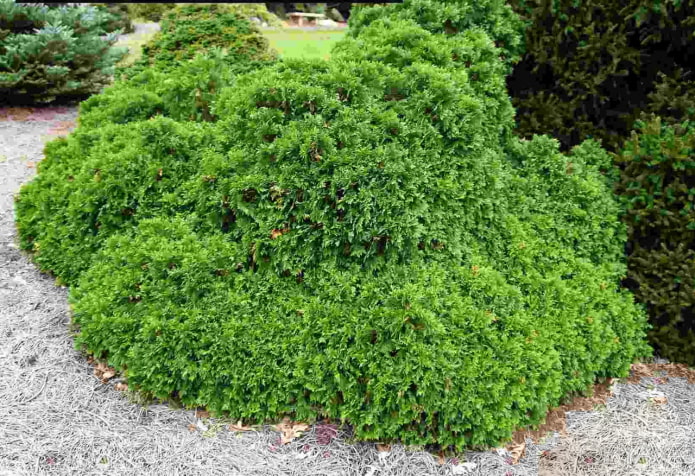
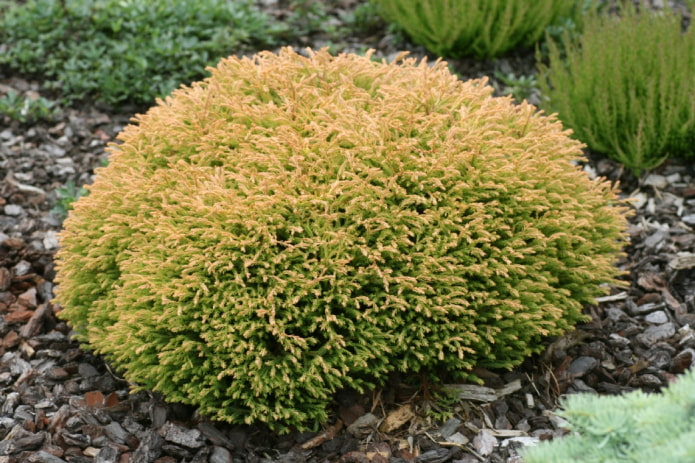

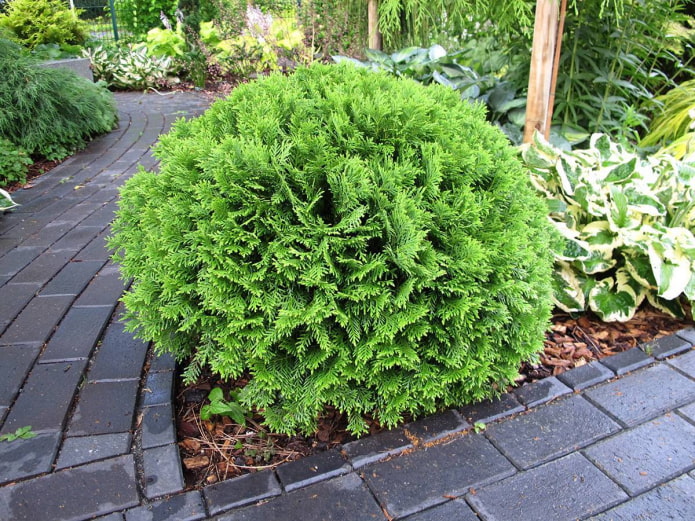
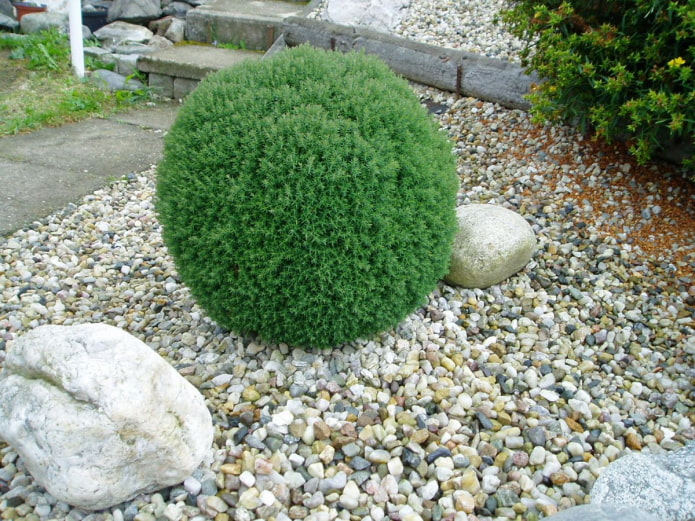
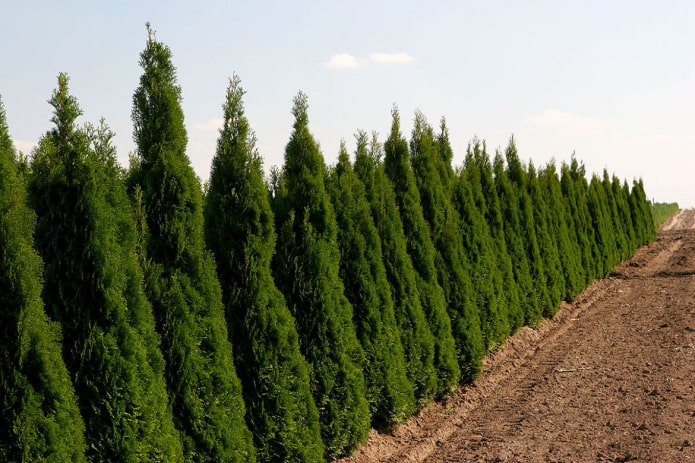

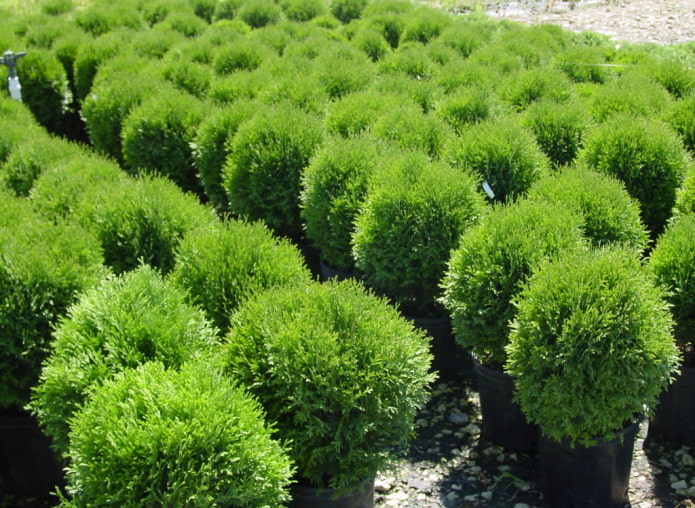
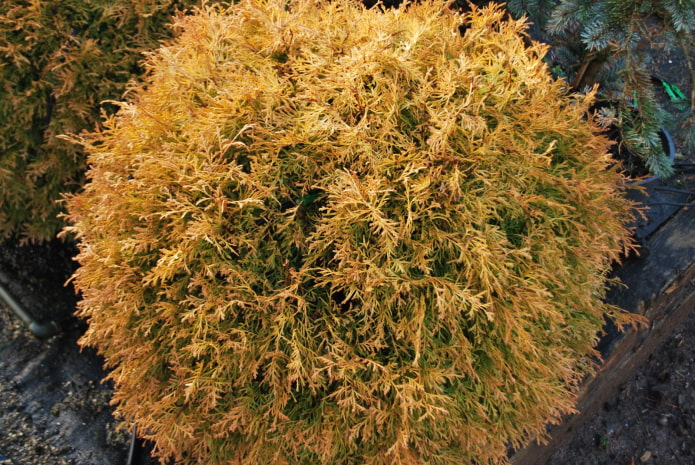
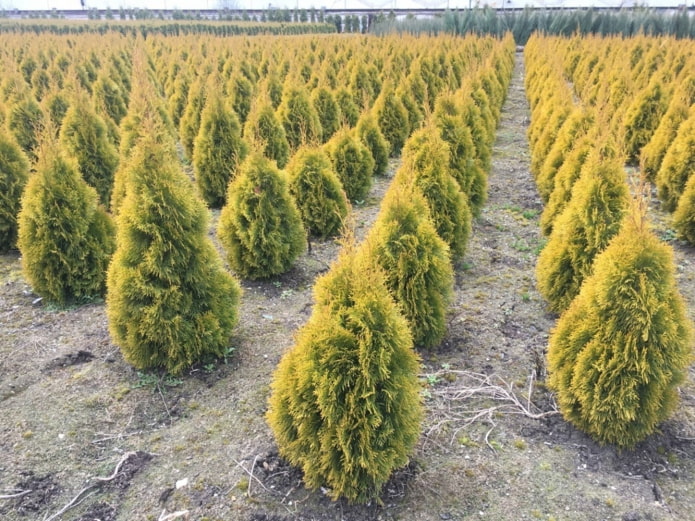
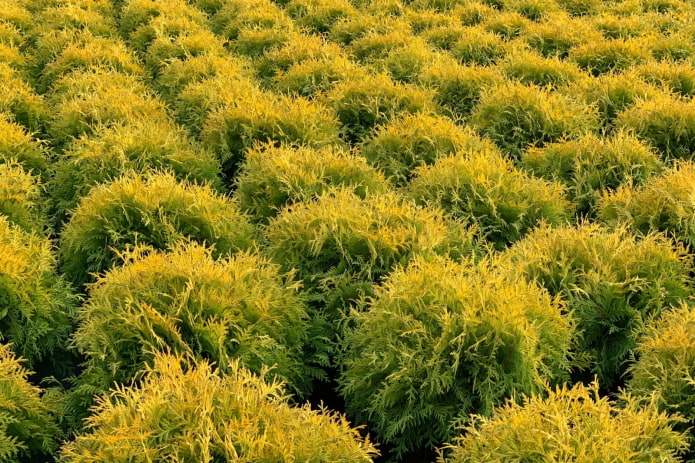
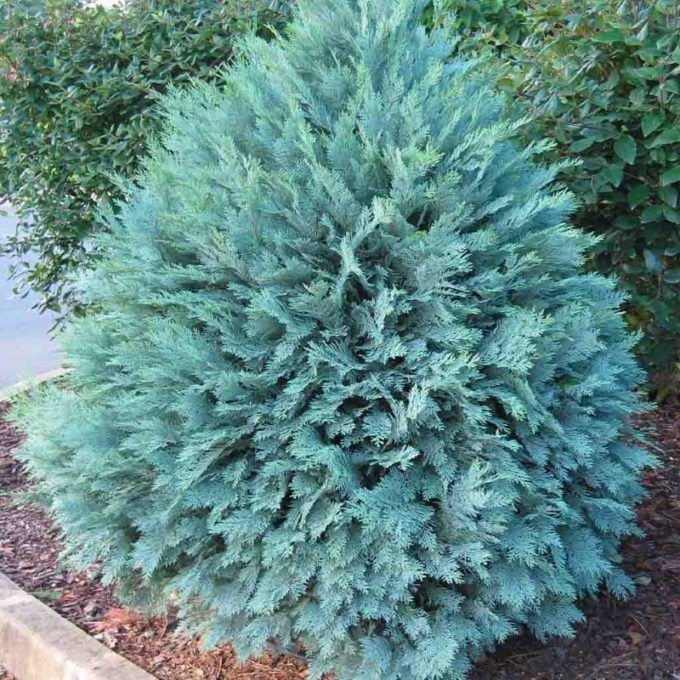
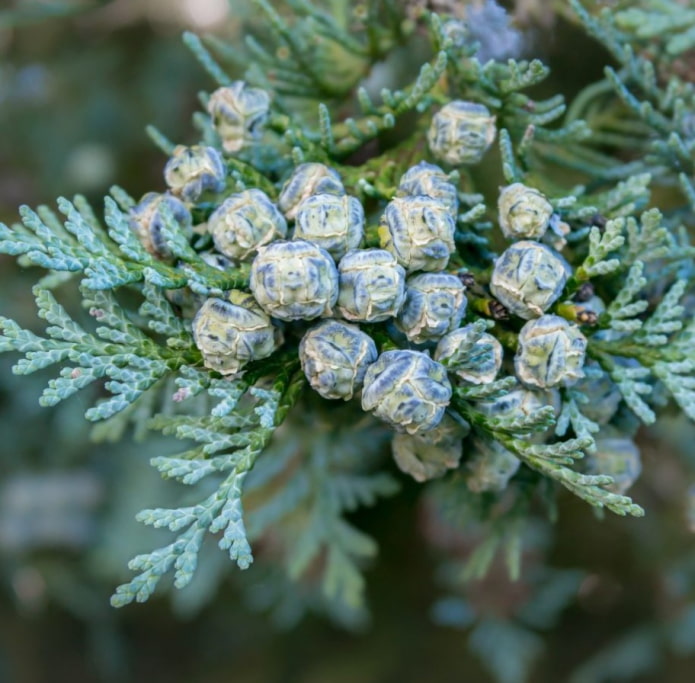
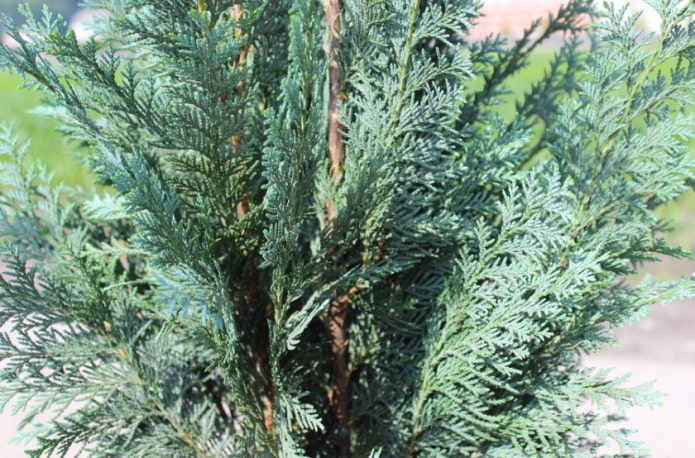
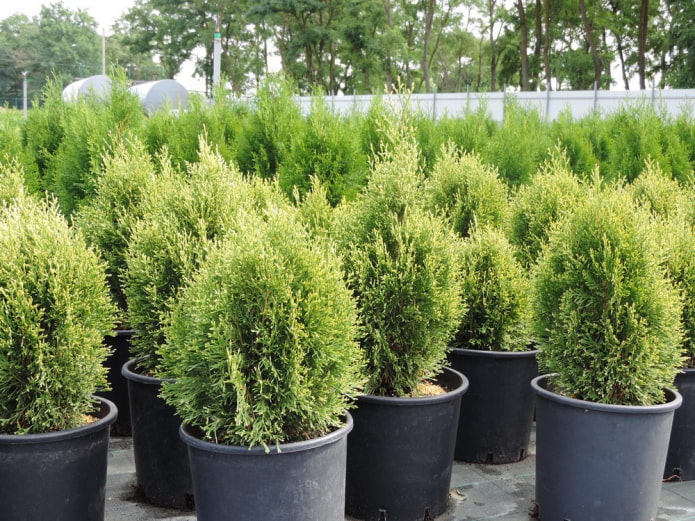
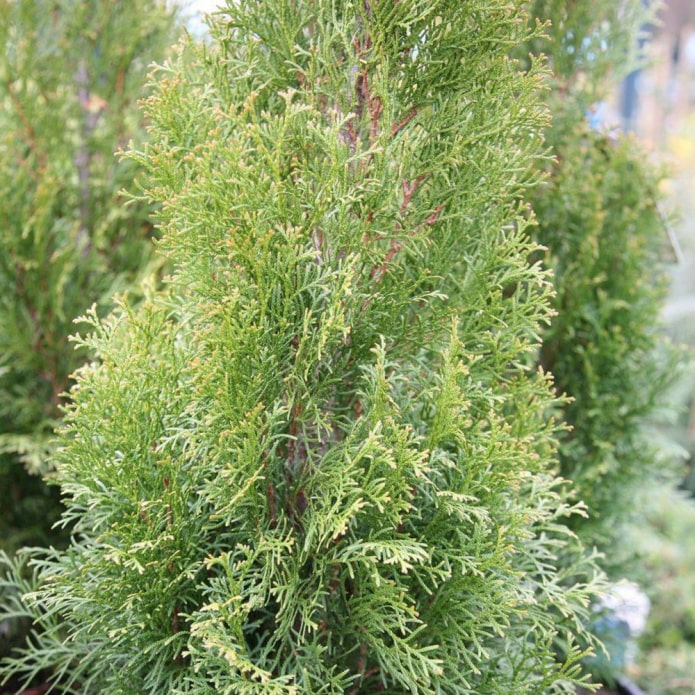
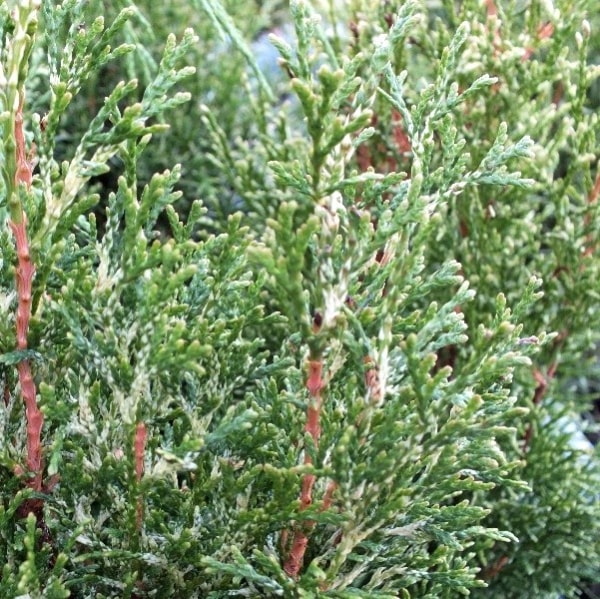
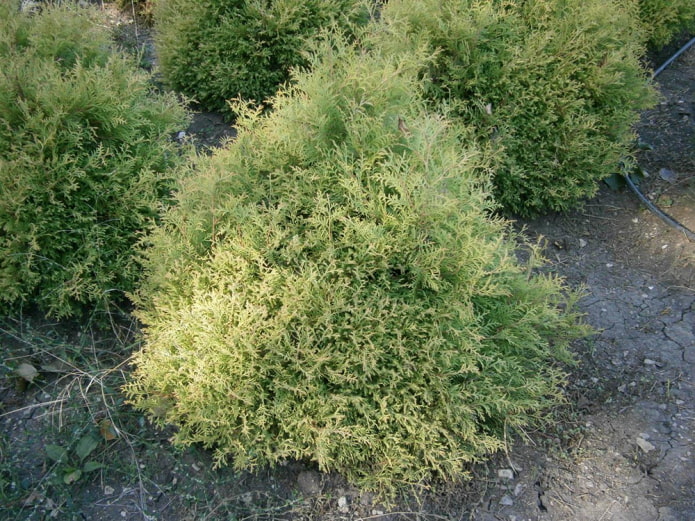
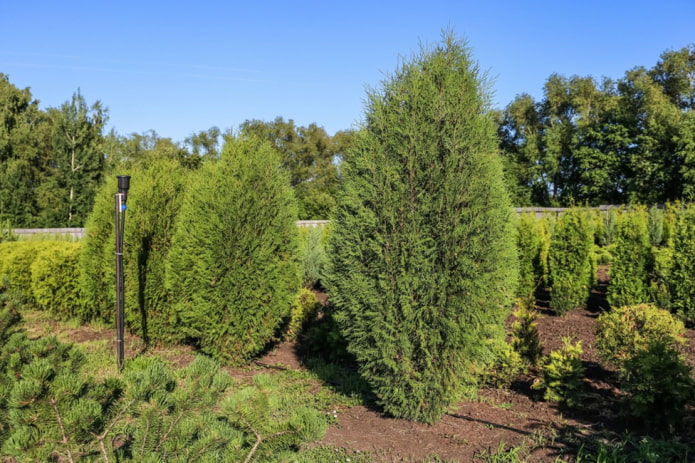
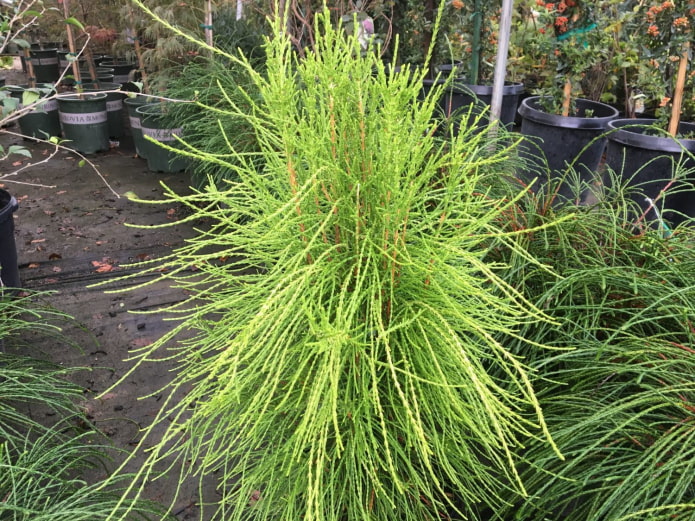

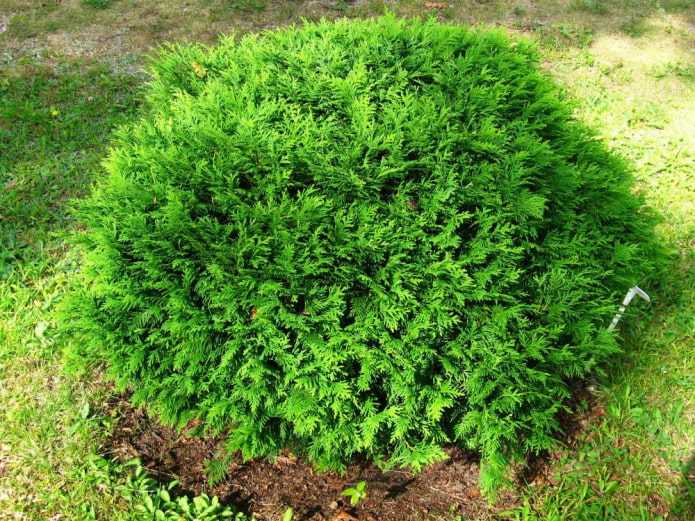
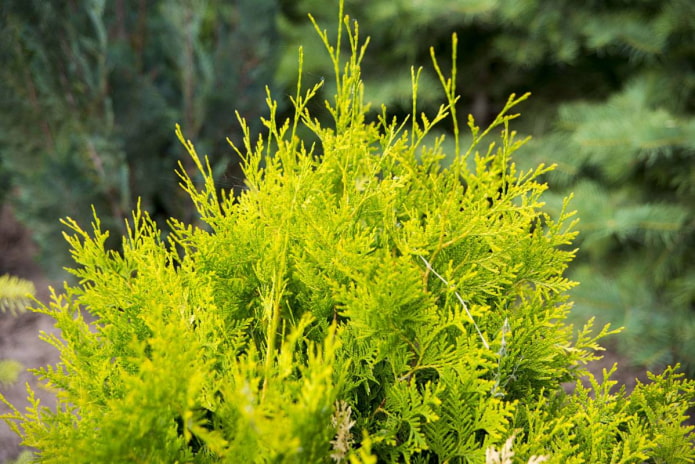
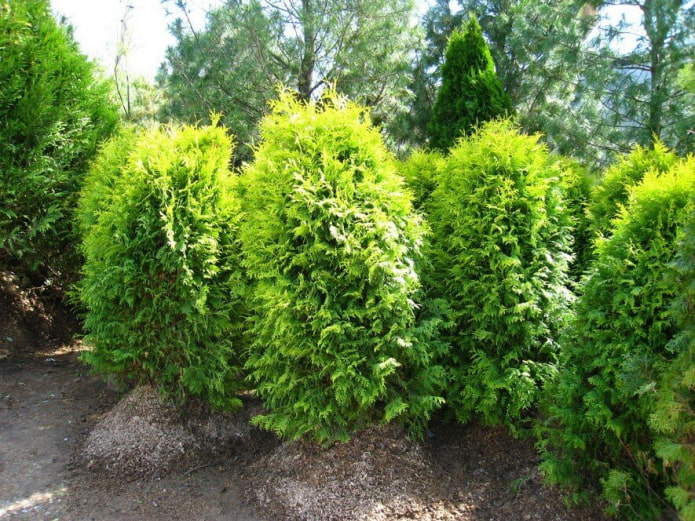
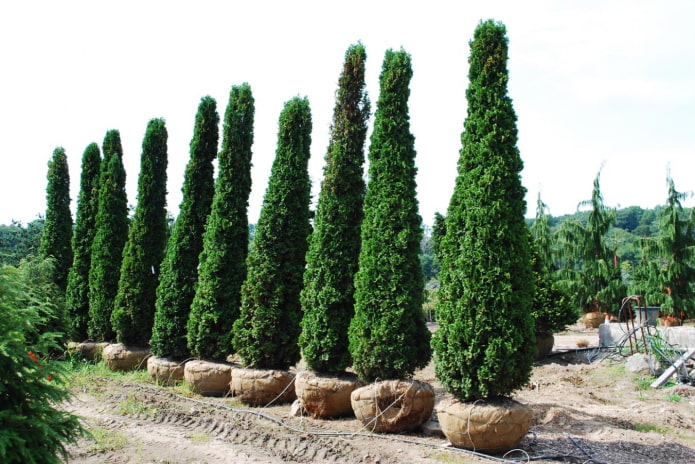

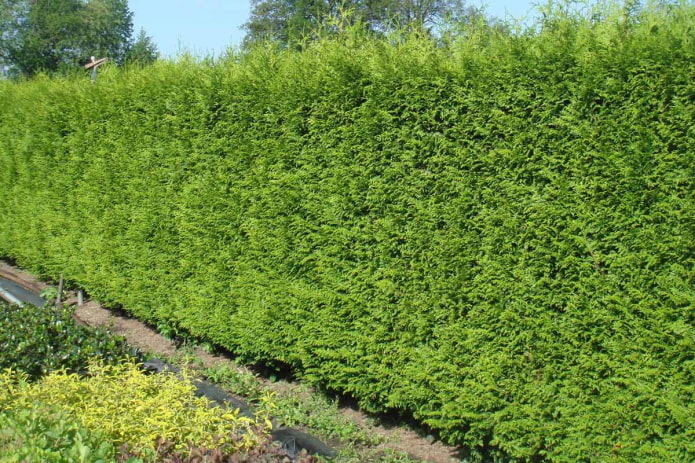
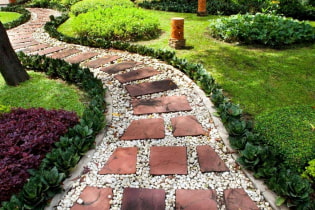 How to decorate garden paths beautifully for a summer residence?
How to decorate garden paths beautifully for a summer residence?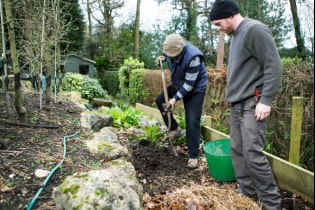 What fertilizers should be used in spring?
What fertilizers should be used in spring? How to use gabions on the site?
How to use gabions on the site?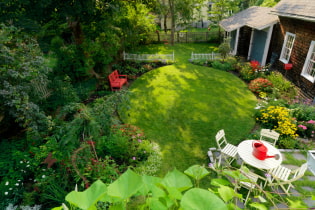 Landscaping of a summer cottage on 6 acres
Landscaping of a summer cottage on 6 acres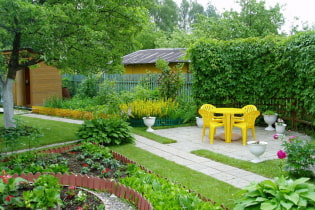 How to arrange the landscape design of a suburban area of 4 ares?
How to arrange the landscape design of a suburban area of 4 ares?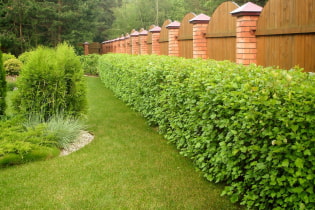 What plants can you make a hedge?
What plants can you make a hedge?